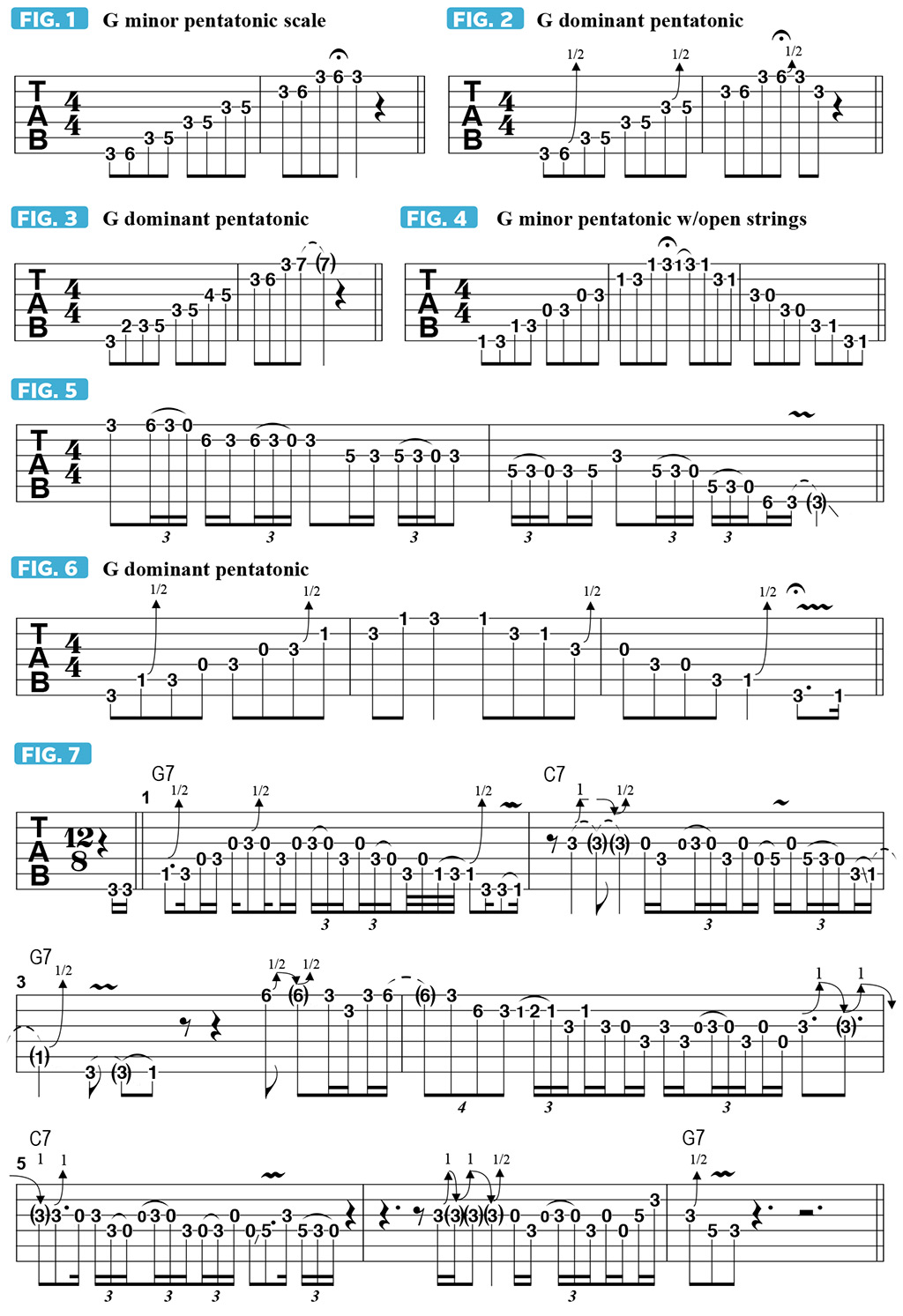Why using the major third is crucial for your blues-based solos
When soloing over dom7 chords, the inclusion or substitution of the major third in a minor pentatonic line always sounds good
As I stated last month, many improvised solos in blues, rock, jazz, country and other forms of music are based on pentatonic, or five-tone, scales. In blues and rock, the most prevalent scale used for soloing is minor pentatonic, which is intervallically spelled 1 (root), b3 (flatted third), 4 (fourth), 5 (fifth) and b7 (flatted seventh). In the key of G, that translates to the notes of G minor pentatonic, G Bb C D F, as shown in FIGURE 1.
Likewise, most blues songs are played in major keys, in what is known as a dominant harmonic environment, which contains these chord tones: 1 (root), 3 (major third), 5 (fifth) and b7 (flatted seventh); when played together, a dominant seven chord is sounded. In G, those notes are G B D F, and the resultant chord is G7. Universally, chords that contain the major third, and the flatted seventh, are known as dominant seven chords.
As so many basic tenets of music can be traced back to the major scale, so is the case with this delineation. When playing chords built from that scale, the root chord, or tonic, is a major seven, the IV (four) chord is a major seven, known as the subdominant, and the V (five) chord is a dominant seven, also known simply as dominant. In the key of C, these chords are Cmaj7, Fmaj7 and G7.

It is for this reason that, when soloing over dom7 chords, the inclusion or substitution of the major third in a minor pentatonic line sounds so good; the presence of the major third makes direct reference to one of the chord tones of the dominant chord.
Two ways to substitute the major third for the minor third in a minor pentatonic line are to either bend the minor third up a half step, or to simply substitute the major third for the minor third. In FIGURE 2, the minor third - Bb in the key of G - is bent up to the major third, B natural. In FIGURE 3, B natural replaces Bb in the minor pentatonic note sequence, resulting in a sequence of G B C D F, known as dominant pentatonic.
An essential position for soloing when utilizing G minor pentatonic is first position, incorporating open strings, as shown in FIGURE 4. One can also include all of the open strings, as shown in FIGURE 5. When playing in first position, try bending every Bb note up to B natural in order to attain a G7 sound, as demonstrated in FIGURE 6. FIGURE 7 presents a seven-bar solo played over a slow blues in G, with emphasis on bending the minor third up to the major third, as well as an abundant use of open strings.
Guitar World Associate Editor Andy Aledort is recognized worldwide for his vast contributions to guitar instruction, via his many best-selling instructional DVDs, transcription books and online lessons. Contact Andy at andyaledort.com.
All the latest guitar news, interviews, lessons, reviews, deals and more, direct to your inbox!
Guitar World Associate Editor Andy Aledort is recognized worldwide for his vast contributions to guitar instruction, via his many best-selling instructional DVDs, transcription books and online lessons. Andy is a regular contributor to Guitar World and Truefire, and has toured with Dickey Betts of the Allman Brothers, as well as participating in several Jimi Hendrix Tribute Tours.

